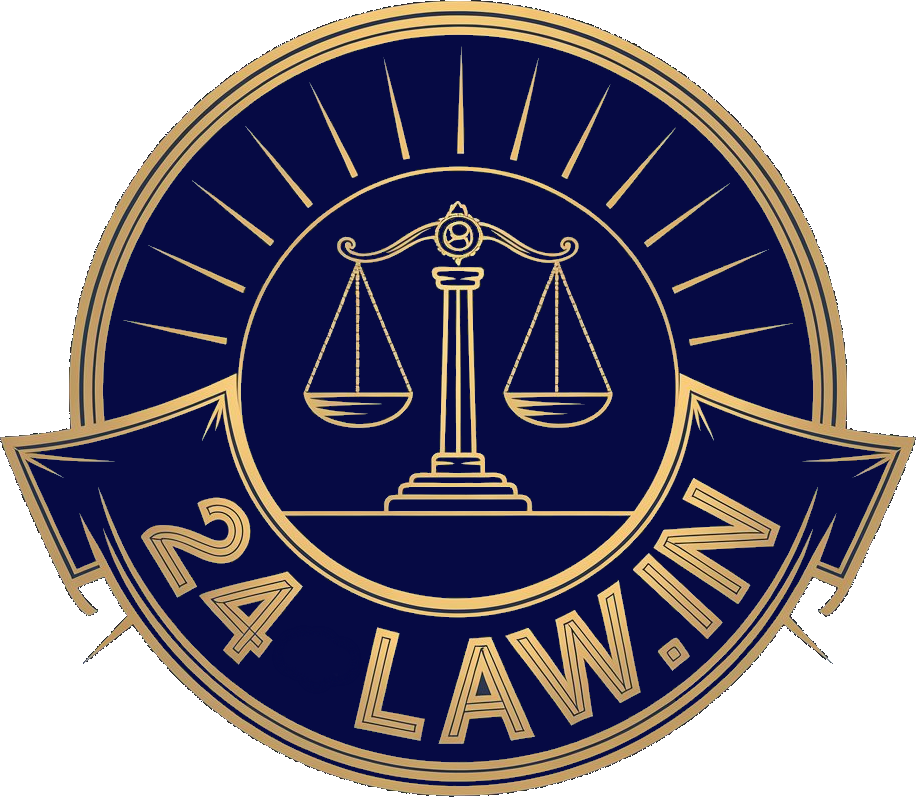Supreme Court | Judicial Review Confined to Procedural Errors | High Court Orders Set Aside | Removal with Superannuation Benefits Restored
- Post By 24law
- August 22, 2025

Kiran Raj
The Supreme Court of India Bench of Justice Rajesh Bindal and Justice Manmohan held that the impugned orders of the Single Bench and the Division Bench of the High Court could not be legally sustained. The Court set aside both orders and restored the punishment imposed by the Appellate Authority, which had earlier reduced the penalty from dismissal to removal from service with superannuation benefits. The appeal before the Supreme Court was accordingly allowed, and the directions of the High Court were reversed. The Court concluded that the Appellate Authority’s order dated 07.12.2012, imposing the penalty of removal from service with superannuation benefits, stood restored.
The matter arose from disciplinary proceedings initiated against an employee of the Bank who had been appointed as a messenger in 1997. Complaints were received in April 2008 alleging that he had been taking bribes for coordination in the sanction of loans. On 15.11.2008, a notice was issued to him requiring explanation for his absence from duty and for allegedly executing loan documents both at his residence and at the bank branch. The explanation was not found satisfactory.
Subsequently, on 05.01.2010, a formal Memo of Charge was issued, alleging that he was acting as a conduit in sanctioning and disbursement of loans in exchange for illegal gratification. The respondent submitted his reply on 12.02.2010. An Inquiry Officer was appointed on 10.03.2010, and on 04.10.2010, the Inquiry Officer submitted his report holding the respondent guilty of acting as a middleman and of unauthorized absence from duty between 20.04.2008 to 25.04.2008. A show cause notice was issued on 29.12.2010, and the respondent appeared before the Disciplinary Authority on 08.01.2011, claiming innocence but seeking forgiveness for mistakes committed.
Accepting the Inquiry Officer’s report, the Disciplinary Authority imposed the punishment of dismissal from service on 08.01.2011. The respondent filed a statutory appeal, and the Appellate Authority, taking a compassionate view, reduced the penalty from dismissal to removal from service with superannuation benefits on 07.12.2012. The respondent then filed a writ petition before the High Court, which was allowed by the Single Bench on 16.05.2018. The High Court set aside the punishment, ordered reinstatement with back wages, and granted liberty to initiate fresh proceedings.
The Bank filed an intra-court appeal, which was dismissed by the Division Bench of the High Court on 14.12.2022. The Division Bench upheld the Single Bench’s order. Aggrieved by this, the Bank approached the Supreme Court.
The appellants argued that the High Court erred in treating the initial show cause notice as the chargesheet and in concluding that the respondent had been singled out. They contended that the Branch Manager and Field Officer involved were also removed from service. They further submitted that the High Court exceeded the scope of judicial review in interfering with findings of the Inquiry Officer and Disciplinary Authority. The respondent argued that as a Class IV employee he was made a scapegoat, that he had no role in sanctioning loans, and that the Bank could have initiated fresh proceedings instead of prolonging litigation.
The Court examined the sequence of disciplinary proceedings and noted that a show cause notice was issued on 15.11.2008 followed by a chargesheet on 05.01.2010 detailing irregularities in sanctioning and disbursement of loans. The Inquiry Officer, after recording statements of witnesses including loanees, found the charges proved. The Court recorded that the loanees testified about having paid money to the respondent. The Court noted the statement made by the respondent before the Disciplinary Authority: “I am innocent. Knowingly or unknowingly whatever mistake I have made, please forgive me. One of my son is handicapped and one of my daughter is of marriageable age. I have always served the Bank with utmost satisfaction. I don’t have any other source of income.” The Court observed that this indicated an indirect admission.
The Court stated: “The apparent reason assigned by the Single Bench is that the respondent was a class IV employee. He did not have any power to sanction loan. The Bank should have proceeded against other officers, which it did not do.” The Court recorded that the Bank had in fact proceeded against the Branch Manager and Field Officer and both were removed from service. It observed: “The opinion expressed by the Single Bench that the finding recorded by the Inquiry Officer and the Disciplinary Authority were based on conjuncture and surmises, cannot be legally sustained.” The Court noted that the findings were based on preponderance of probabilities.
The Court referred to established law, stating: “The power of judicial review in the matters of disciplinary inquiries, exercised by the departmental/appellate authorities discharged by constitutional courts under Article 226 or Article 32 or Article 136 of the Constitution of India is circumscribed by limits of correcting errors of law or procedural errors leading to manifest injustice or violation of principles of natural justice and it is not akin to adjudication of the case on merits as an appellate authority...” It further recorded that if the disciplinary authority accepts the findings of the inquiry officer, no detailed reasons are required.
The Court observed: “It is not the case of the respondent that there was violation of principles of natural justice. Meaning thereby, due process was followed during the course of inquiry.” It further observed: “The proved charge against the respondent was that he was working as a conduit in getting the loans sanctioned.” The Court concluded that leniency had already been shown by the Appellate Authority by reducing the punishment from dismissal to removal with superannuation benefits.
The Supreme Court recorded: “For the reasons mentioned above, in our opinion, the impugned orders passed by the Single Bench and the Division Bench of the High Court cannot be legally sustained. The same are liable to be set aside. Ordered accordingly.” The Court further held: “The order passed by the Appellate Authority dated 07.12.2012 imposing punishment of ‘removal from service’ with superannuation benefits stands restored.” It allowed the appeal with no order as to costs. The Court concluded: “Pending applications, if any, shall also stand disposed of with no order as to costs.”
Advocates Representing the Parties:
For the Petitioners: Mr. Sanjay Kapur, AOR; Mr. Surya Prakash, Adv.; Ms. Shubhra Kapur, Adv.; Ms. Mahima Kapur, Adv.; Ms. Akankasha Bhatia, Adv.; Mr. Annu Mishra, Adv.
For the Respondents: Mr. Devashish Bharuka, Sr. Adv.; Ms. Rita Jha, AOR; Ms. Sarvshree, Adv.
Case Title: State Bank of India & Others v. Ramadhar Sao
Neutral Citation: 2025 INSC 1010
Case Number: Civil Appeal No. 10680 of 2025 (Arising out of S.L.P.(C) No. 6722 of 2023)
Bench: Justice Rajesh Bindal, Justice Manmohan


